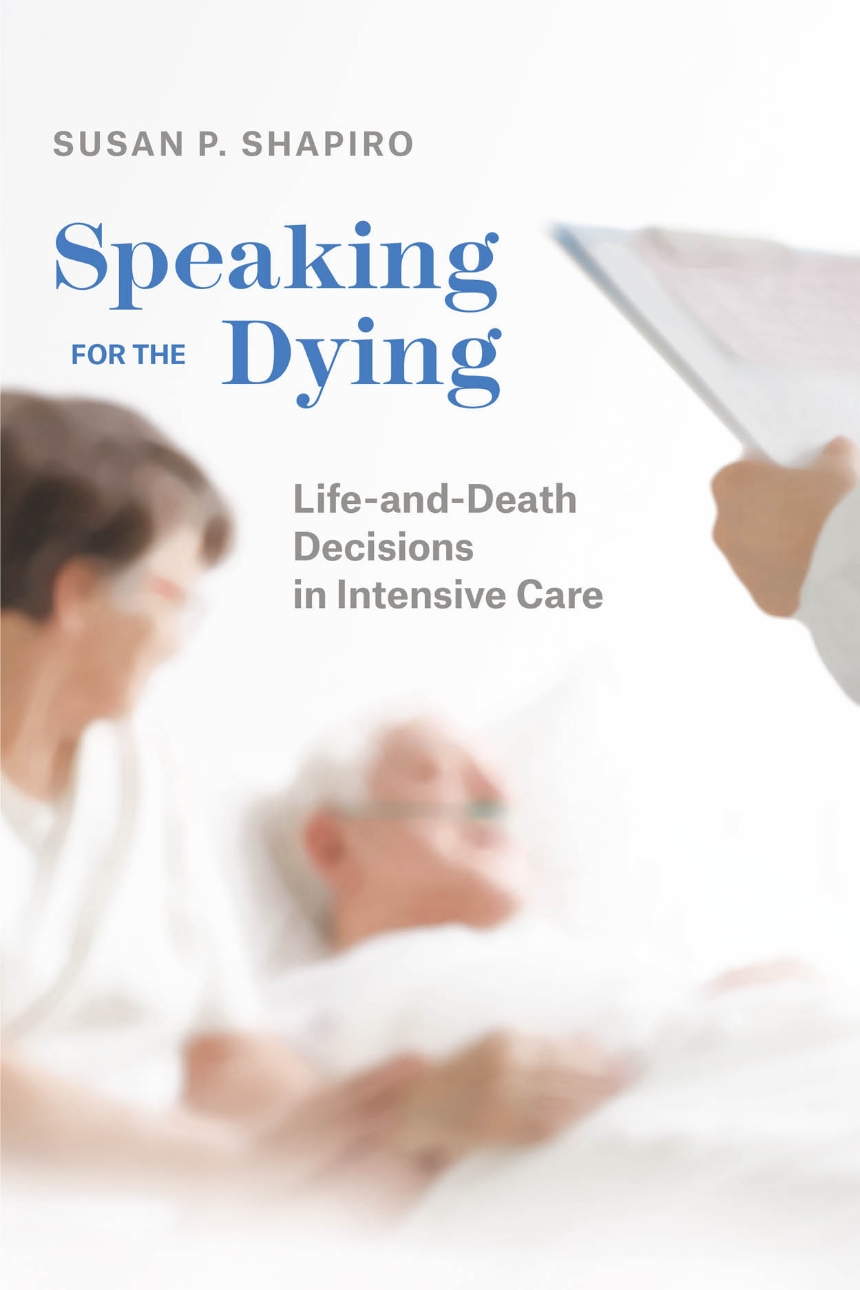Speaking for the Dying
Life-and-Death Decisions in Intensive Care
Seven in ten Americans over the age of age of sixty who require medical decisions in the final days of their life lack the capacity to make them. For many of us, our biggest, life-and-death decisions—literally—will therefore be made by someone else. They will decide whether we live or die; between long life and quality of life; whether we receive heroic interventions in our final hours; and whether we die in a hospital or at home. They will determine whether our wishes are honored and choose between fidelity to our interests and what is best for themselves or others. Yet despite their critical role, we know remarkably little about how our loved ones decide for us.
Speaking for the Dying tells their story, drawing on daily observations over more than two years in two intensive care units in a diverse urban hospital. From bedsides, hallways, and conference rooms, you will hear, in their own words, how physicians really talk to families and how they respond. You will see how decision makers are selected, the interventions they weigh in on, the information they seek and evaluate, the values and memories they draw on, the criteria they weigh, the outcomes they choose, the conflicts they become embroiled in, and the challenges they face. Observations also provide insight into why some decision makers authorize one aggressive intervention after the next while others do not—even on behalf of patients with similar problems and prospects. And they expose the limited role of advance directives in structuring the process decision makers follow or the outcomes that result.
Research has consistently found that choosing life or death for another is one of the most difficult decisions anyone can face, sometimes haunting families for decades. This book shines a bright light on a role few of us will escape and offers steps that patients and loved ones, health care providers, lawyers, and policymakers could undertake before it is too late.
Speaking for the Dying tells their story, drawing on daily observations over more than two years in two intensive care units in a diverse urban hospital. From bedsides, hallways, and conference rooms, you will hear, in their own words, how physicians really talk to families and how they respond. You will see how decision makers are selected, the interventions they weigh in on, the information they seek and evaluate, the values and memories they draw on, the criteria they weigh, the outcomes they choose, the conflicts they become embroiled in, and the challenges they face. Observations also provide insight into why some decision makers authorize one aggressive intervention after the next while others do not—even on behalf of patients with similar problems and prospects. And they expose the limited role of advance directives in structuring the process decision makers follow or the outcomes that result.
Research has consistently found that choosing life or death for another is one of the most difficult decisions anyone can face, sometimes haunting families for decades. This book shines a bright light on a role few of us will escape and offers steps that patients and loved ones, health care providers, lawyers, and policymakers could undertake before it is too late.
368 pages | 15 line drawings, 13 tables | 6 x 9 | © 2019
Chicago Series in Law and Society
Law and Legal Studies: Law and Society
Sociology: Medical Sociology
Reviews
Table of Contents
One / Holding Life and Death in Their Hands
Appendix A: The Research
Appendix B.1: Patient Occupation
Appendix B.2: Patient Age, Gender, and Marital Status
Appendix B.3: Location and Purpose of Observed Meetings
Appendix C: Relationship between Multiple Trajectories Traversed
Appendix D: Decision Trajectory by Patient and Surrogate Characteristics
Appendix E: Advance-Directive Status and Aspects of the Decision-Making Process, Outcome, and Impact
Acknowledgments
Notes
References
Index
Is This for Me?
Two / The Intensive Care UnitPersonnel
Rhythms
Economics
Conclusion
Three / ActorsRhythms
Economics
Conclusion
Patients
Friends, Family, and Significant Others
Health Care Professionals
Conclusion
Four / DecisionsFriends, Family, and Significant Others
Health Care Professionals
Conclusion
Informed Consent
Venues
Affect
Conflict
Conclusion
Five / PrognosisVenues
Affect
Conflict
Conclusion
Evidence
Timing
Mixed Messages
Negotiation
Accuracy
Prognostic Framing
Conclusion
Six / Decision-Making ScriptsTiming
Mixed Messages
Negotiation
Accuracy
Prognostic Framing
Conclusion
The Legal Script
Cognitive Scripts
Conflicts of Interest
Law at the Bedside
Conclusion
Seven / Improvisation: Decisions in the Real WorldCognitive Scripts
Conflicts of Interest
Law at the Bedside
Conclusion
The Patient Should Decide
Reprising Patient Instructions
Standing in the Patient’s Shoes
Beneficence
It’s God’s Decision
What We Want
Denial, Opting Out
Conclusion
Eight / Making a Difference?Reprising Patient Instructions
Standing in the Patient’s Shoes
Beneficence
It’s God’s Decision
What We Want
Denial, Opting Out
Conclusion
The Role of Physicians
Opting for a Trajectory
Outcomes
I Thought the Law Would Take Care of This
Does Any of This Matter?
Nine / The EndOpting for a Trajectory
Outcomes
I Thought the Law Would Take Care of This
Does Any of This Matter?
Implications
Before It’s Too Late
When It’s Too Late
When “This” Happens to Me
Before It’s Too Late
When It’s Too Late
When “This” Happens to Me
Appendix A: The Research
Appendix B.1: Patient Occupation
Appendix B.2: Patient Age, Gender, and Marital Status
Appendix B.3: Location and Purpose of Observed Meetings
Appendix C: Relationship between Multiple Trajectories Traversed
Appendix D: Decision Trajectory by Patient and Surrogate Characteristics
Appendix E: Advance-Directive Status and Aspects of the Decision-Making Process, Outcome, and Impact
Acknowledgments
Notes
References
Index
